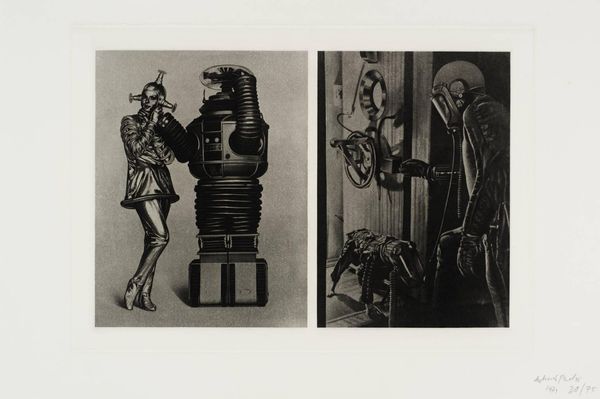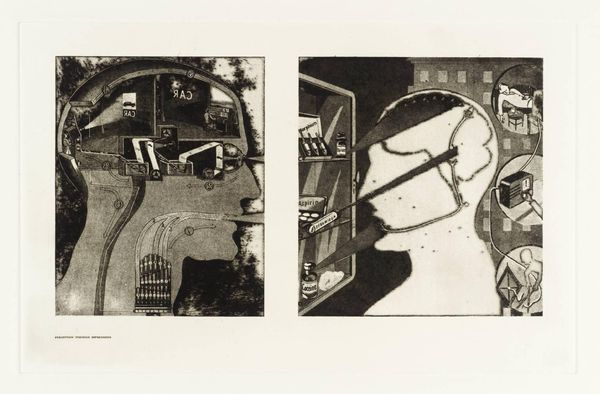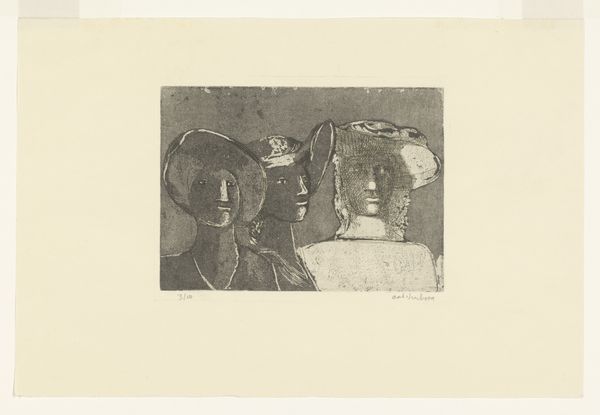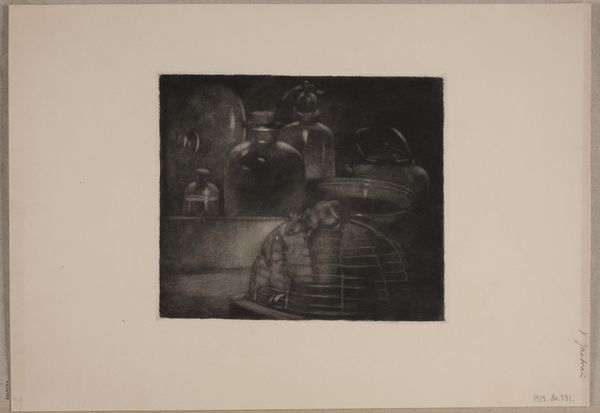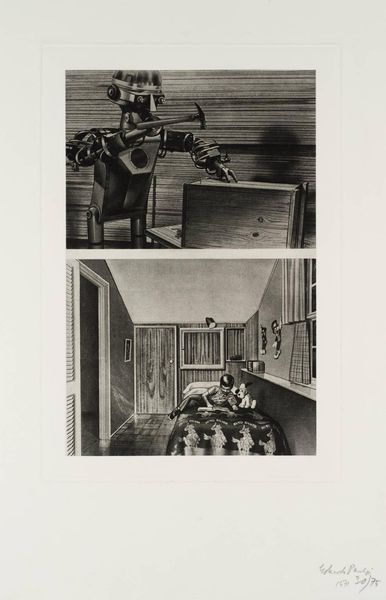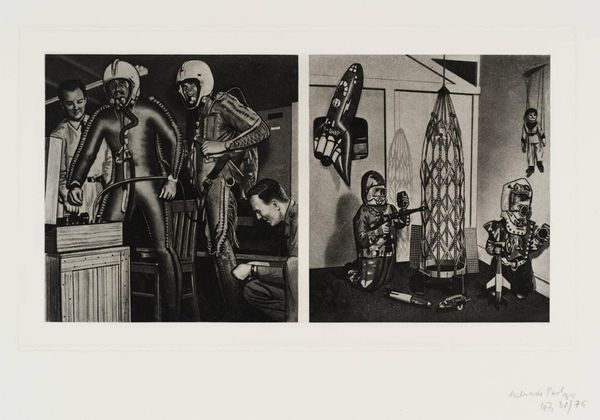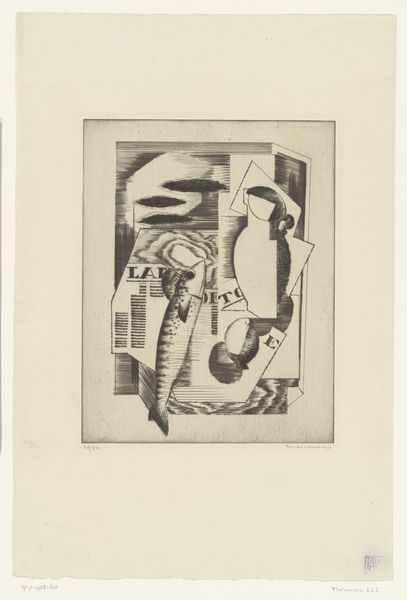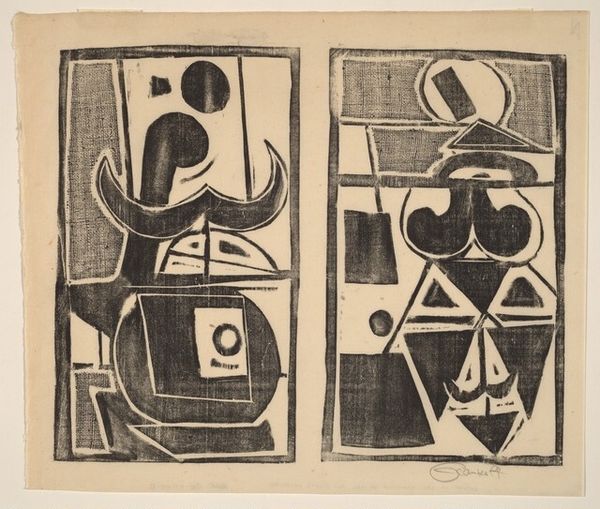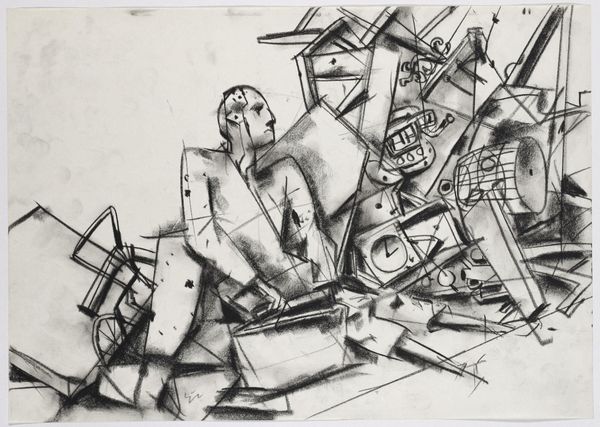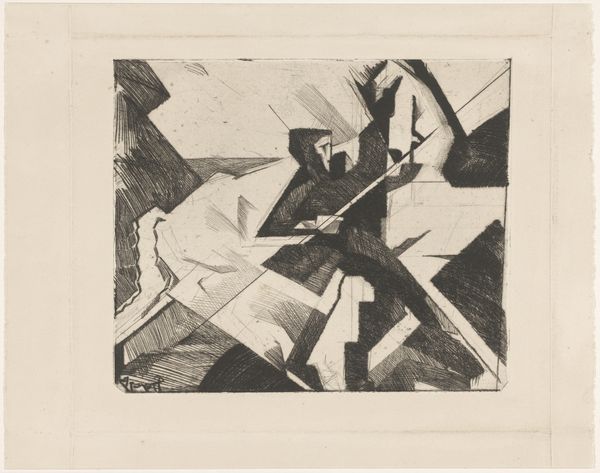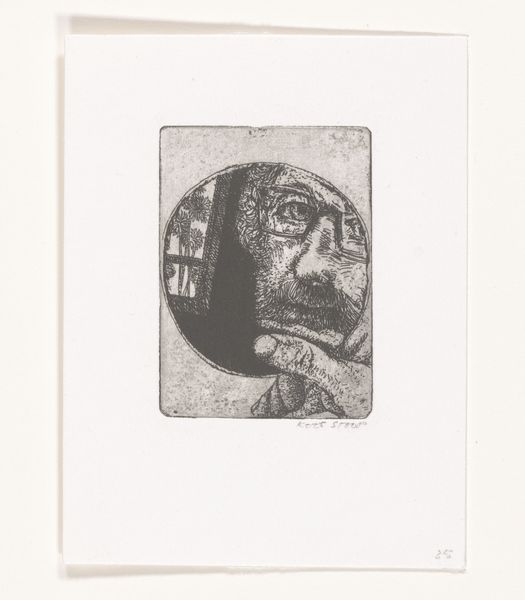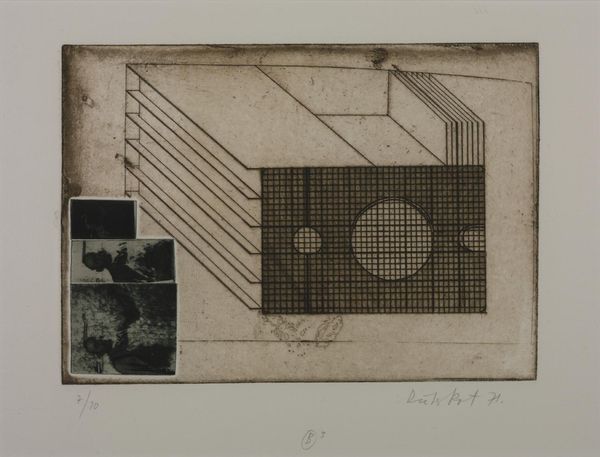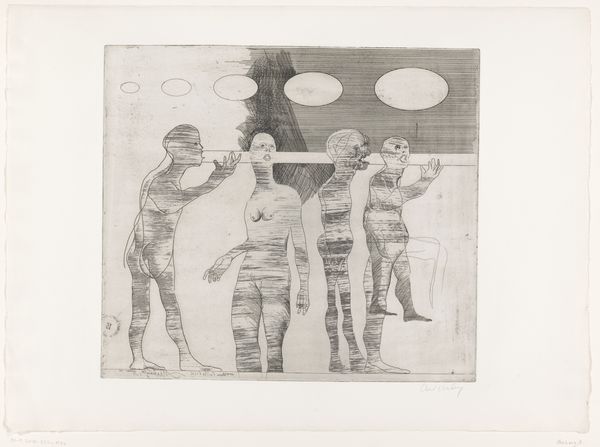
C. Left: Le Robot ‘Robert’ Voulait Aller à New York Mais le Passager est Trop Lourd: TWA Plane - Steps - Cap 14 Persons with Two Stewardesses. Right: Wonder Toy, Robert the Robot 1971
0:00
0:00
Dimensions: image: 245 x 355 mm
Copyright: © The Eduardo Paolozzi Foundation | CC-BY-NC-ND 4.0 DEED, Photo: Tate
Curator: Eduardo Paolozzi created this print, "C. Left: Le Robot ‘Robert’ Voulait Aller à New York Mais le Passager est Trop Lourd: TWA Plane - Steps - Cap 14 Persons with Two Stewardesses. Right: Wonder Toy, Robert the Robot," that juxtaposes two scenes of robots in the age of transatlantic travel. Editor: The stark contrast immediately grabs you. On one side, a huge robot and a TWA plane; on the other, a child with goggles and a toy robot. It speaks of scale, dreams, and technological ambition. Curator: Absolutely. Paolozzi often explored the post-war fascination with technology and mass culture. The TWA imagery positions the robot within a context of global aspirations and technological progress. Editor: The robot, with its rivets and blocky form, recalls early ideas of automation. The smaller robot and child evoke a more personal, intimate connection with technology, a yearning for the future as imagined then. Curator: It's a commentary on how technological advancement, even in its most fantastical forms, is always shaped by human desires and the limitations, perhaps, of what technology can truly deliver. Editor: I see a hint of melancholy too. The robot can't go to New York, its dream unfulfilled. It reflects on unfulfilled dreams of progress and wonder, perhaps. Curator: That’s a great point, and it shows how Paolozzi was so skilled in layering cultural commentary with personal narratives. Editor: It's more than just robots; it's about where we thought we were going, and what that meant to us.
